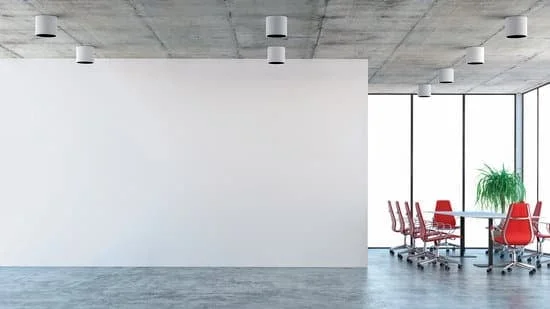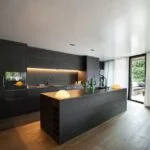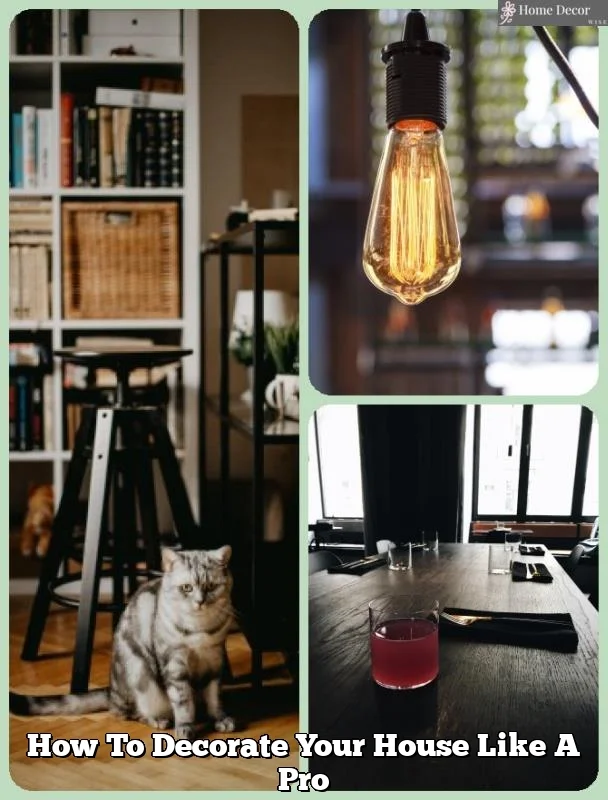The art of showcasing is a powerful tool when it comes to interior design. A well-decorated showcase not only adds beauty and style to your home, but it also allows you to display your favorite décor pieces and collectibles in an organized and visually appealing manner. Whether you have a large built-in shelf or a small glass display case, learning how to decorate a showcase can make a significant impact on the overall ambiance of your space.
In this article, we will guide you through the process of decorating a showcase in your home. We will explore different types of showcases and help you choose the perfect one for your space. Additionally, we will discuss the importance of designing with purpose and identifying the primary function of your showcase.
Styling tips and tricks for showcasing décor and collectibles will also be covered, along with guidance on optimal placement within your home for maximum impact. We will delve into the power of lighting and how it can enhance the visual appeal of your showpieces. Furthermore, we will provide insights on organizing and arranging items within your showcase to create a cohesive display.
Moreover, we cannot overlook the sentimental value that certain items hold. We will share ideas on how to incorporate personal touches such as sentimental items and memorabilia into your showcase to make it truly unique and reflective of your personality.
Lastly, maintaining the cleanliness and durability of your showcase is essential for its longevity. We will provide practical maintenance tips to keep your showcase looking its best.
By the end of this article, you will have all the knowledge needed to elevate both the beauty and functionality of your home with an artfully decorated showcase. Let’s dive in.
Understanding the Different Types of Showcases
When it comes to showcasing in your home, choosing the perfect showcase for your space is essential. Understanding the different types of showcases available can help you make an informed decision that aligns with both your needs and aesthetic preferences.
Display Cabinets
Display cabinets are an excellent choice if you want to showcase a collection of items or valuable possessions. These cabinets typically feature glass doors and shelves, allowing for easy visibility of the items inside. Display cabinets are available in various sizes, styles, and materials to suit different interior design themes.
Wall Shelves
Wall shelves are a versatile option for showcasing smaller items or decorative pieces. They can be mounted on the wall, creating a visually appealing display while saving floor space. Depending on your preference, you can opt for floating shelves or open-back shelves. Floating shelves provide a clean and minimalist look, while open-back shelves offer a more open and airy feel.
Curio Cabinets
Curio cabinets are designed specifically for displaying collectibles or decorative ornaments in a more traditional and formal setting. These cabinets often feature intricate woodwork and glass panels to provide a sophisticated presentation of your cherished items. Curio cabinets come in various sizes and styles, including corner curios that fit snugly into corners to maximize space utilization.
Bookcases with Display Shelves
If you have a collection of books as well as decorative pieces, bookcases with display shelves offer the best of both worlds. These multifunctional showcases combine storage for books on lower shelves with display space on upper shelves or compartments with glass doors. Bookcases with display shelves come in different configurations and designs, allowing you to customize them according to your preferences.
When choosing the perfect showcase for your space, consider factors such as the size of the room, existing furniture and decor style, as well as the type and size of items you want to showcase. By understanding the different types of showcases available, you can make a well-informed decision that enhances your home’s aesthetics and functionality.
Designing with Purpose
When it comes to decorating a showcase in your home, it is important to consider the primary function that you want it to serve. This will help guide your design choices and ensure that your showcase not only looks aesthetically pleasing but also meets your specific needs.
One common purpose of a showcase is to display valuable or collectible items. If you have a collection of antiques, artwork, or precious objects that you want to showcase, it is essential to choose a showcase that provides adequate protection and visibility for these items. Look for showcases with glass doors and shelves that allow for easy viewing while also protecting your collection from dust and damage.
Another function of a showcase could be to provide storage and organization space. In this case, you may want to choose a larger showcase with multiple compartments or drawers. This type of showcase can be practical in areas such as the living room or hallway where you can store items like books, DVDs, or other personal belongings. Consider choosing a showcase with adjustable shelves or removable dividers so you can customize the space according to your needs.
It’s also worth considering whether the primary function of your showcase is purely decorative. If this is the case, then you have more freedom in terms of design choices. You can opt for showcases with unique shapes or interesting architectural details that add visual interest to the space. Additionally, you may want to focus on selecting decorative items such as vases, sculptures, or artwork that complement the overall theme and style of your home.
To summarize, when designing your showcase with purpose in mind, consider whether its primary function is for displaying valuable items, providing storage and organization space, or simply adding decorative appeal. Once you have determined its purpose, you can make informed decisions about the type of showcase that best suits your needs and begin selecting the appropriate design elements.
| Primary Function | Showcase Design Recommendations |
|---|---|
| Displaying valuable items | – Choose a showcase with glass doors and shelves for visibility and protection
|
| Storage and organization space | – Opt for a larger showcase with multiple compartments or drawers
|
| Decorative appeal | – Select showcases with unique shapes or architectural details
|
Enhancing the Aesthetics
When it comes to showcasing décor and collectibles in your home, it’s important to pay attention to the aesthetics of your display. The way you style your showcase can greatly enhance the overall visual appeal and impact of your showcased items. Here are some styling tips and tricks to help you create an artful display:
- Create Visual Interest: Incorporate a variety of heights, textures, and colors in your showcase. This will add depth and dimension to your display, making it visually appealing. Mix tall items with shorter ones, place textured or patterned objects next to smooth surfaces, and include pops of color to create a visually dynamic arrangement.
- Group Items Thoughtfully: Instead of randomly placing items in your showcase, try grouping them together based on their theme or color scheme. This will create a cohesive look and make it easier for viewers to appreciate the individual pieces as well as the overall display.
- Use Different Display Methods: Experiment with different ways of showcasing your items to add visual interest. Use shelves, stands, hooks, or even floating frames to create a unique and eye-catching arrangement. Additionally, consider using risers or platforms to elevate certain items for better visibility.
| Styling Technique | Example |
|---|---|
| Variety of Heights | Placing a tall vase next to shorter figurines |
| Mixing Textures | Pairing a woven basket with smooth ceramic objects |
| Pops of Color | Adding vibrant pillows or artwork to a neutral showcase |
| Thematic Grouping | Gathering travel souvenirs from different destinations |
| Alternative Displays | Hanging decorative plates on the wall using plate hangers |
| Using Risers | Elevating a valuable statue on a velvet-covered pedestal |
Remember, the key to enhancing the aesthetics of your showcase is to experiment and find what works best for your space and showcased items. Play around with different arrangements and display techniques until you achieve a visually appealing and cohesive look that showcases your décor and collectibles in the best possible way.
Optimal Placement
When it comes to showcasing your prized possessions and decorative items, finding the perfect spot in your home is key to maximizing their impact. The right placement can enhance the overall aesthetic appeal of your space and draw attention to your showcase. Here are some tips on how to find the optimal placement for your showcase:
- Consider the function of the room: Think about the function and traffic flow of the room where you plan to place your showcase. For example, if it’s a living room or a foyer, you’ll want to choose a prominent location that immediately catches the eye upon entering.
On the other hand, if it’s a bedroom or a study, you may prefer a quieter corner or area where it can be appreciated without overpowering the space. - Assess natural lighting: Natural light can play a significant role in showcasing your displayed items. Take note of where the windows are located and how much sunlight they receive at different times of the day. Consider positioning your showcase near a window to take advantage of this natural illumination. However, be mindful of direct sunlight that could potentially fade or damage delicate items over time.
- Consider focal points and architectural features: Evaluate the architectural features of your home such as alcoves, built-in shelves, or fireplace mantels that could serve as ideal spots for displaying your showcase. These existing focal points can provide an excellent backdrop for highlighting your pieces and create a visually appealing arrangement.
Once you have identified potential locations within your home, experiment with different placements before settling on the final spot for your showcase. Remember that every home is unique, so what works for one may not work for another. Ultimately, the goal is to find a placement that complements both the showcased items and the overall design aesthetics of your home.
The Power of Lighting
Lighting plays a crucial role in showcasing the beauty and uniqueness of your showpieces. The right illumination can enhance the colors, textures, and details of your collectibles, creating a captivating visual display. Here are some tips on how to use lighting effectively to showcase your showpieces:
- Consider Natural and Artificial Lighting: When choosing lighting for your showcase, consider both natural and artificial sources. Natural light can bring out the true colors and shine of your items, so place your showcase near a window or in a well-lit area if possible. For artificial lighting, opt for LED lights or halogen spotlights that emit cool white light as they closely mimic natural light.
- Use Adjustable Spotlights: Install adjustable spotlights above or around your showcase to highlight specific items or areas within it. Adjustable spotlights allow you to direct the light onto different objects as desired, drawing attention to each piece individually.
- Use Accent Lighting: Accent lighting can create a dramatic effect by highlighting specific features or details of your showpieces. Consider installing small LED strip lights or puck lights inside the showcase cabinets to add an extra layer of illumination. This technique works particularly well with translucent items such as glassware or crystal figurines.
To ensure safety while using lighting in your showcase, remember to:
- Avoid placing heat-emitting lights too close to delicate materials like paper or fabric.
- Use low-wattage bulbs if you have vintage or fragile items in your collection.
- Keep electrical cords neatly tucked away and out of sight.
By strategically using lighting techniques in your showcase, you can create an enchanting display that not only showcases your showpieces but also adds depth and dimension to your overall home decor.
Organizing and Arranging
Once you have chosen your showcase and determined its primary function, the next step is to organize and arrange the items you wish to display. Creating a cohesive display in your showcase will not only enhance the overall aesthetic appeal but also create a visually pleasing focal point in your home.
Firstly, consider the size and scale of the objects you plan to showcase. Group similar-sized items together to maintain balance and avoid overcrowding. If you have larger items, place them at the back of the showcase to create depth and visual interest. Additionally, consider arranging items in odd numbers as it is often more visually appealing than even-numbered groupings.
Next, pay attention to color coordination and contrast. Consider how different colors will interact with one another when placed side by side. Aim for a balanced color palette or experiment with complementary colors for a vibrant display. Utilize neutral-colored backdrops or shelves to allow your showcased items to take center stage.
Another important aspect of organizing and arranging is creating visual flow within your showcase. Arrange objects in a way that leads the viewer’s eye from one item to another seamlessly. Consider placing taller items towards the back or sides while gradually reducing height towards the front or middle. You can also experiment with asymmetrical arrangements for an unexpected twist.
Lastly, don’t forget about negative space. Leaving some empty space between objects can help highlight each individual piece and prevent a cluttered look. Be mindful of spacing between objects as well – too little space may give off a cluttered feel while too much space may make your display appear sparse.
By taking these tips into consideration when organizing and arranging your showcase, you can create a cohesive display that effectively showcases your prized possessions while maintaining a visually appealing aesthetic in your home décor scheme.
Adding Personal Touches
Preserving Memories
One of the most fulfilling aspects of decorating a showcase in your home is the opportunity to incorporate sentimental items and memorabilia. Whether it’s cherished family heirlooms, travel souvenirs, or personal mementos, these items add a unique touch to your showcase and help tell the story of your life and experiences. When adding personal touches to your showcase, it’s important to consider the significance of each item and how it contributes to the overall aesthetic.
Showcasing Family Heirlooms
Family heirlooms hold immense sentimental value and are often passed down through generations. Including these special pieces in your showcase not only honors your family history but also adds a timeless elegance to your display. Consider showcasing antique jewelry, vintage photographs, or delicate china that has been handed down in your family. To highlight these items, choose a showcasing design that complements their style and color scheme.
Highlighting Travel Souvenirs
If you’re a keen traveler, incorporating travel souvenirs into your showcase is an excellent way to showcase your adventures. Whether it’s seashells from a beach vacation, artwork from a foreign country, or trinkets representative of different cultures, these items can enliven your display and provide a conversation starter for guests. Choose a dedicated section within your showcase to highlight these souvenirs and consider using small stands or risers to elevate them for better visibility.
Creating Meaningful Displays
When incorporating sentimental items into your showcase, take the time to curate meaningful displays that truly capture the essence of each item. Group related items together – such as family photos with matching frames or postcards collected from various cities – to create cohesiveness within the display.
Experiment with different heights, angles, and arrangements until you achieve a layout that feels balanced and visually captivating. Additionally, consider rotating the items in your showcase periodically to give each piece its time in the spotlight.
Incorporating sentimental items and memorabilia into your showcase adds a personal touch that can truly elevate the emotional connection you have with your home. By carefully selecting and arranging these items, your showcase becomes not only a display of personal mementos but also a reflection of who you are.
Maintenance and Care
Once you have created a beautifully decorated showcase in your home, it is important to maintain and care for it properly to ensure its visual appeal and durability. Regular maintenance and cleaning will not only keep your showcase looking its best, but it will also help to extend its lifespan. Here are some tips for maintaining and caring for your showcase:
- Dusting: Dust is one of the biggest enemies of any display case. Regular dusting will prevent a build-up of dirt and keep your showcase looking fresh. Use a soft, lint-free cloth or a feather duster to gently remove dust from the surfaces of the showcase, including the shelves, glass panels, and any decorative items inside.
- Glass Cleaning: Keep the glass panels of your showcase crystal clear by cleaning them regularly. Avoid using harsh chemical cleaners that can damage the glass or leave streaks behind. Instead, use a mixture of warm water and mild dish soap or vinegar solution to clean the glass. Apply the solution gently with a soft microfiber cloth or sponge, then rinse with clean water and dry with a lint-free cloth.
- Maintenance Check: Periodically check your showcase for any signs of wear or damage that may require repair or replacement. Inspect hinges, locks, handles, or any other hardware regularly to make sure they are functioning properly. If you notice any loose fixtures or cracks in the wood or glass, address them immediately to prevent further damage.
In addition to regular maintenance tasks, consider these tips for caring for your showcase:
- Avoid Direct Sunlight: Excessive exposure to direct sunlight can cause fading or discoloration of items displayed inside the case as well as damage the materials used in construction such as wood finishes or adhesive used on glass panels. To protect against this harm place your case away from windows where direct sunlight is strongest or use UV-filtering shades or curtains if your case is near a window.
- Use Proper Handling Techniques: When you need to remove items from your showcase, be sure to handle them with care. Avoid touching delicate surfaces with dirty fingers, and always lift items rather than dragging them across the surface of the shelf. This will help prevent scratches and other damage to both your collectibles and the showcase itself.
By implementing these basic maintenance and care tips, you can ensure that your showcase remains visually appealing and functional for years to come. Remember to set aside time for regular cleaning and inspections to catch any issues early on before they become more serious problems. With proper maintenance, you can enjoy the beauty of your artfully decorated showcase for a long time.
Conclusion
In conclusion, a well-decorated showcase can truly elevate the beauty and functionality of your home. By understanding the different types of showcases and choosing the perfect one for your space, you can create a focal point that enhances the overall aesthetic. Considering the primary function of your showcase will help you design it with a purpose and make it more useful in displaying your decor and collectibles.
Styling tips and tricks can further enhance the aesthetics of your showcase, making it visually appealing to anyone who enters your home. Optimal placement is key in ensuring maximum impact, so take the time to find the right spot that allows your showcase to shine. Lighting also plays a significant role in showcasing your showpieces, so be sure to choose the right illumination that highlights their beauty.
Organizing and arranging items in a cohesive manner within your showcase will create an eye-catching display. Don’t forget to add personal touches by incorporating sentimental items and memorabilia into your showcase. This not only adds personality but also creates a conversation starter for guests.
Lastly, don’t overlook maintenance and care. Keeping your showcase clean and well-maintained will not only boost its visual appeal but also ensure its durability over time.
In summary, decorating a showcase in your home is an art form that combines aesthetics, functionality, and personal style. By following these guidelines outlined throughout this article, you can transform any ordinary space into an extraordinary one. So go ahead, explore the art of showcasing in your home and enjoy the elevated beauty it brings.
Frequently Asked Questions
How do you arrange a living room showcase?
When it comes to arranging a living room showcase, there are a few key principles to keep in mind. First, consider the layout of the room and the placement of other furniture pieces. The showcase should be positioned in a way that allows for easy access and visibility from different angles. Next, think about the scale and proportion of the showcase in relation to the room size.
It should neither overpower nor get lost amidst other elements in the living room. Additionally, consider creating visual balance by arranging a mix of tall and short items throughout the showcase. Finally, don’t forget to leave some empty space to avoid overcrowding and allow for a more visually appealing display.
What should be kept in showcase?
A living room showcase serves as a focal point and offers an opportunity to display treasured items or decorative pieces. What you choose to keep inside highly depends on your personal taste and style preferences.
However, some common items that are often included in showcases are family photographs, art pieces or sculptures, sentimental objects such as heirlooms or collectibles, vases with fresh flowers or plants, books or magazines, and any other decorative items that reflect your personality or interests. Remember that showcasing too many items can make it appear cluttered, so it’s important to strike a balance between displaying meaningful objects without overwhelming the space.
How do you fill a showcase?
Filling a living room showcase requires thoughtfulness and creativity to create an aesthetically pleasing arrangement. Start by selecting items that have visual appeal individually while also harmonizing with one another when placed together. Varying heights and sizes can add interest and depth to the display; you can use stands or risers to lift certain objects higher if needed.
Consider grouping similar items together for a cohesive look, such as placing small figurines alongside curated seashells or arranging books within thematic categories. To prevent monotony, intersperse different textures and materials throughout the showcase – combining elements like glass, wood, metal can add visual charm. Experiment with different configurations and step back to assess the overall balance and arrangement as you go along, making adjustments if necessary until you achieve a display that pleases your eye.

I’m thrilled to be your companion on this exciting journey through the world of home decor and design. With a passion for turning houses into homes and a keen eye for the finer details, I’m here to help you transform your living spaces into beautiful, functional, and meaningful havens.





